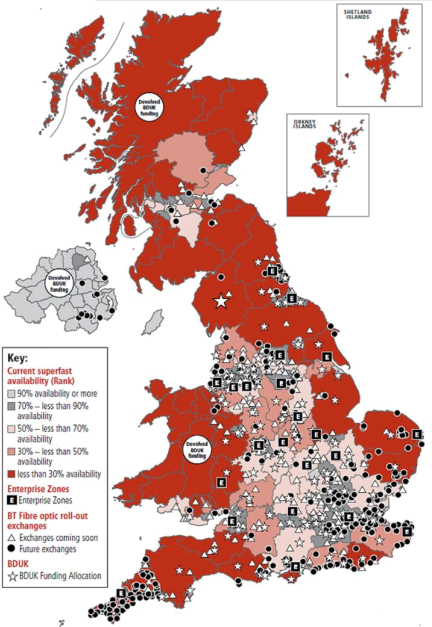关键词 > BPLN0025
BPLN0025: Business Cases for Infrastructure 2020-21
发布时间:2024-05-15
Hello, dear friend, you can consult us at any time if you have any questions, add WeChat: daixieit
BPLN0025: Business Cases for Infrastructure 2020-21
Total time allowed: 24 hours (suggested time allowance: 2 hours)
Deadline: 09:00am (UK time) Thursday 29th April
• Answer THREE questions from PART A and ALL of PART B.
• Part A attracts 60% of the overall marks, while Part B attracts 40% of the overall mark.
• Use illustrations and include diagrams in your answers where they assist in providing explanation.
• Start each answer on a new page.
• Total word count: 2,500
• Submit answers as a single file via Turnitin taking extra care to ensure you are uploading the correct file. Only one submission will be accepted, so your first submission will be final.
• Answers submitted after the deadline will be subject to lateness penalties.
PART A: (60% of marks)
Answer THREE questions ONLY from Part A.
Question 1
Discuss the motivation behind the adoption of the ‘5-case model’ as specified in the HMT Green Book. (10% of marks)
Outline some of the limitations of the Strategic case for the appraisal of infrastructure fit for the challenges of sustainable development. How do the recent revisions to the 2020 edition of the Green Book seek to address these? (10% of marks)
Question 2
Define what is meant by the discount rate and outline the component parts of the discount rate used by HM Treasury in the 2020 edition of the Green Book (7% of marks)
Discuss the limitations of economic cost benefit analysis for the consideration of social equity (for example spatial and temporal equity) and make some suggestions for how the treatment of this could be improved within the 5-case model? (13% of marks)
Question 3
Discuss the key differences between the financial and economic dimensions of the 5-case model. Include in your answer consideration of focus, coverage, relevant standards, and analysis (typical inclusions and exclusions). (13% of marks)
Give examples of HM Treasury good practice for the specification of alternative project options. (7% of marks)
Question 4
Roger Allport has identified a number of key areas where the private sector can contribute to infrastructure development. Discuss and critique the role the private sector can play in improving infrastructure project success. (14% of marks)
Illustrate a process used to determine how risks are shared and managed between the public and private sectors during a typical infrastructure PPP project. (6% of marks)
Question 5
What is the difference between Natural Capital assessment and Natural Capital accounting? (10% of marks)
What are the fundamental problems with CBA when treating environmental impacts, and how does Natural Capital seek to address this? (10% of marks)
Question 6
Briefly discuss the contingent valuation method for estimating economic prices for use in Cost Benefit Analysis. Outline the typical applications, strengths and weaknesses of the methodology (20% of marks)
PART B: (40 per cent of marks)
Answer ALL of Part B
You have been commissioned by the UK Department for Culture, Media and Sport (DCMS) to undertake elements of the Strategic Outline Case (using the HMT 5-case model methodology) for a new superfast broadband network in the UK referred to as the “Express Broadband Programme UK” or EBPUK
Figure 1: Current superfast availability in the UK.

The underlying intent of the EBPUK Programme is to progress towards achieving 100% broadband coverage for the UK utilising wire/fibre, wireless and satellite communications networks by 2023, with the deployment of superfast broadband where affordable. This will lead to the ongoing incremental further evolution of improvements to superfast broadband capability beyond this date.
In particular, implementation of the programme aims to achieve investment to provide a consistent network broadband experience across the whole of the UK comparable to that experienced in urban areas. Intervention by government is required to cover the investment gap in order to achieve such equality across the UK; the justification is that this strategic intervention is the only way such improvements can be achieved.
EBPUK currently has five primary goals:
• To support economic growth in the UK, including in rural areas which are currently poorly served and designated Enterprise Zones (Figure 1).
• To ensure this country has the best Superfast Broadband in Europe by the end of 2023.
• To ensure delivery of Standard Broadband to virtually all communities in the UK within the lifetime of this parliament (2023)
• To ensure the efficient use of funding to deliver Superfast Broadband and Standard Broadband including the leveraging of private funding
• To assist other Government initiatives which are dependent upon customers ability to access Broadband based services.
EBPUK’s vision for broadband is driven by two key IT policy goals:
• The target set by the Secretary of State for Culture, Media and Sport: to have the best Superfast Broadband network in Europe by 2023; and
• The European Union aspiration to have 30Mbps available to all and for 50% access to 100Mbps by 2028.
Three potential project delivery options have been identified in response to the above spending objectives as follows:
Option 1: Centrally led delivery via a single EBPUK Megaproject:
EBPUK contracts for and directs the provision of services centrally through subsidised national contract(s) directly with suppliers to deliver improved infrastructure.
Option 2: Locally led delivery via multiple local schemes:
Locally delivered subsidised local contracts with suppliers to deliver improved infrastructure,
where services are provided at a local authority level (boroughs and councils). EBPUK funding is provided as a contribution to projects when a local body produces a satisfactory Local
Broadband Plan and undertakes a competition to select a supplier.
Option 3: Customer led delivery:
Subsidised individual householder and small business contracts with suppliers to deliver increased demand for services to stimulate improved infrastructure, where consumers make the delivery decision and the market provides the subscriptions, products and services.
Broader policy contexts and challenges:
Government departments have 100 major IT projects underway with a total value of £35 billion. However, over the recent past IT difficulties have affected many of these projects, not least in the management of large IT companies, leading to the Government seeking new delivery models as an alternative to major projects.
Government is pursuing a policy of ‘Localism’ and ‘Big Society’ which seeks to put citizens at the heart of public services. The future of local government is being shaped by two forces: a drive towards localism; the need to cut spending and achieve efficiencies.
Local authorities vary considerably in their experience of rolling out broadband schemes and funds available to support such projects.
There is a lack of diversity in broadband providers operating in the UK market, and customers tend to be poorly consulted during IT initiatives and poorly informed regarding key broadband performance metrics.
Many people in the UK do not enjoy the full benefits of the internet, either because the speeds they can receive do not support more data-rich services such as video-streaming, or indeed they cannot get fixed- line or mobile broadband service at all. The business case for broadband is often weaker in rural areas, and in some cases non-existent as the cost of deployment rises considerably.
Question 7
Evaluate the current project spending objectives for the EBPUK against the HMT SMART objectives framework. (8% of marks)
Undertake a swot analysis for each of the three delivery options (Options 1, 2 and 3) to identify associated benefits, risks, constraints and dependencies for each option. Use dimensions of the 5 case model to help focus your analysis. (12% of marks)
Question 8
The time scale for the construction of the programme is 1 year (2022), the subsequent operational life (2023 onwards) of the project is set as 4 years,
Use the data outlined in table 1, 2 and 3 below to determine the economic return from Option 1 using the following indicators:
• Net Present Value
• Benefit/Cost Ratio
State your recommendation for funding this project option based on its economic return. (12% of marks)
Question 9
Considering your responses to questions 7 and 8 above, advise the DCMS of the possible limitations to using CBA to determine the viability of Option 1. (8% of marks)
Table 1: Data required for calculation of Economic Benefits of the EBPUK
|
Description |
Data |
|
Productivity gains |
£1.3bn pa |
|
|
|
|
Labour market impacts |
£70m pa |
|
|
|
|
Wellbeing benefits |
£1.7bn pa |
|
|
|
|
Discount rate |
5% |
|
|
|
Table 2: Number of residential and commercial addresses upgraded by EBPUK and Economic costs of the EBPUK per address
|
Description |
Data |
|
Number of residential addresses upgraded |
4,510,000 |
|
|
|
|
Number of commercial addresses upgraded |
700,000 |
|
|
|
|
Cost per residential address upgraded |
£211 |
|
|
|
|
Cost per commercial addresses upgraded |
£350 |
|
|
|
|
EBPUK operating costs per year |
£400m |
Table 3: Discount factors


